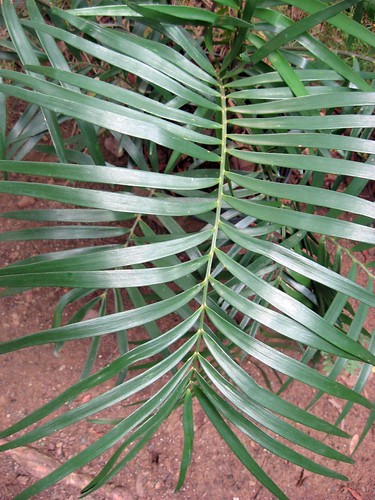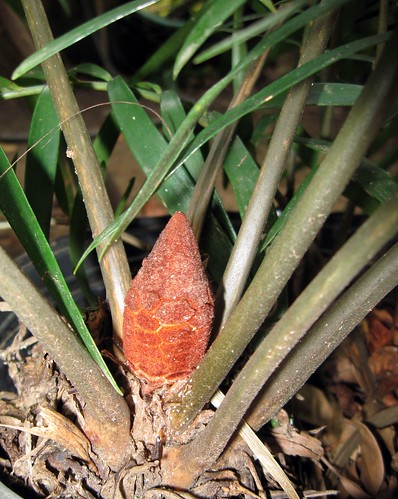This pretty little potted cycad sat around at our local park reminded me of an important point I wanted to make about cycad conservation and the place of cycads in the environment. First things first, this is Zamia pumila which is basically your bog-standard caribbean Zamia. There are a number of different forms of this species reflecting different islands and habitats. This individual may be the cultivar known as "Dominican Republic".

I think we can probably all agree on the basic proposition that this is an attractive plant especially when compared with other plants with similar features - ie a couple of feet high with green fronds and so forth. It is also, like so many other cycads, basically bulletproof in terms of care - capable of withstanding extremes of shade and sun, drought and abuse. Cycads' fleshy leaves tend to be much more long-lasting than palm or fern fronds or ordinary plant leaves so if there is a period of drought this guy will sit in the ground chilling and looking exactly the same whilst other plants wilt, shed leaves or go brown. A little rain and new growth will burst out. This toughness therefore makes this, like many other cycads ideal for use in municipal plantings. Their long life and the relative rarity of random hybridisation means cycads are in an ideal position for "captive breeding" and hence preservation by means of such cultivation.

Of course many cycads are currently too rare for such use but for species like Zamia or Ceratozamia localised production of a fair number of young plants relatively quickly is not difficult to imagine as they cone at a young age. As such one can imagine that if plants held by collectors, enthusiasts or public gardens are pollinated and seed is made available, mass plantings of species like Zamia pumila here could be making a welcome appearance greening certain areas where all else fails like verges, central reservations, "hell strips" and so forth across the caribbean without the need for irrigation or pruning. The more commonly this occurs - the more common each species to form would become, the more common each species or form becomes the cheaper it is to use said species for these jobs and the better protected they become. It really wouldn't take all that many plants to secure a species or forms future when kept in groups like that. Just imagine a town council in, say Florida, or a hotel in Grand Cayman being able to say "we've reduced considerably the costs of maintaining these areas, the seeds we sold paid for part of the initial outlay and by the way we helped preserve an endangered species whilst we did it."

Starting such a process could be as simple as one person collecting seed from their cycad, passing on offsets or making the effort to pollinate it. By way of proof that one does not need a lot of room to have seed producing cycads; the above plant in its little pot has a female cone! Of course there will be a few cycads that will never be suitable for this - the epithytic Zamia pseudoparasitica for example - but we could save so many of these wonderful plants with a little will. I'm hoping increased use of other Zamias such as Z. furfuracea and Z. lodgesii in dry tropical gardens may lead a few bright sparks to the same conclusion and that some of them may follow through on it and at least a few species may benefit.
No comments:
Post a Comment